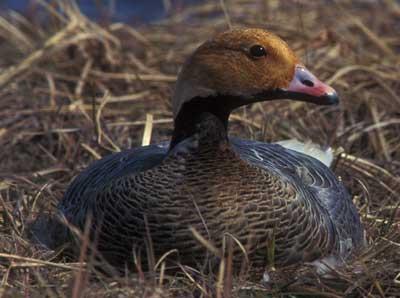
After decades of conservation, the U.S. Fish and Wildlife Service has submitted a proposal to open a subsistence hunt and a general hunt for the Emperor Goose in Alaska. An egg hunt for Cackling Canada geese could follow.
It’s been a generation since Alaskans legally tasted Emperor Goose. In the early 1980s, populations of a number of different geese were in trouble. Emperor Goose numbers plunged by more than half to less than 45,000 birds. In 1987, hunting for the geese closed and has stayed closed for the past 30 years.
Two years ago, the Emperor Goose population rose high enough for managers to begin considering a hunt. Last year, the population hit an estimated 177,000 birds. Together, the three groups – tribal, state and federal representatives – in the Alaska Migratory Bird Co-Management Council created and passed a plan to open a subsistence and general harvest for Emperor Geese.
Patty Schwalenberg, Executive Director of the Council, calls it a victory.
“It’s a victory for tribes in Alaska, but it’s a victory for co-management in general, because we did it together,” Schwalenberg said.
The effort began as a collaborative education attempt to explain which geese were vulnerable but grew into a movement to limit the harvest of the birds. That collaboration, which included the Association of Village Council Presidents, became the co-management council. Underlying it are treaties with countries that stretch the entire flyway from summer to winter habitats. Between 80 to 90 percent of the Emperor Goose population breeds on the Yukon Kuskokwim Delta, and the birds are only found in Alaska and a peninsula in eastern Russia.
Crystal Leonetti, an Alaska Native Affairs Specialist for the U.S. Fish and Wildlife Service, says, in Alaska, residents worked together to grow the goose population.
“We recognize the great sacrifice that elders have made to not have a taste of that special food for a long time,” Leonetti said.
But Leonetti cautions that the population is still vulnerable. It’s about 60,000 birds above the threshold to sustain a hunt. Part of the problem is that Emperor Geese don’t behave like other geese.
“Females don’t nest every year,” Leonetti said. “Another thing about their behavior that’s peculiar is that they tend to stick together as a family unit, and when one is injured or taken by a predator or shot for subsistence harvest, the rest of them will stick around. So they’ll either keep circling, or they’ll land and stay there near the one that was injured or taken.”
The Emperor Goose subsistence hunt is proposed for April 2 through August 31 of this year with no permit or bag limit.
A general hunt is proposed for the fall and winter that would issue unlimited permits with a 1,000 bird harvest limit for the state. Each region would be allocated a harvest number with 125 birds dedicated to the Yukon Kuskokwim region.
Public comment on the proposed hunts will be accepted through March 13.
Another proposal submitted by the Association of Village Council Presidents’ Waterfowl Conservation Committee would open Cackling Canada Geese to egg gathering on the Yukon Kuskokwim Delta.
Anna Rose MacArthur is a reporter at KYUK in Bethel.




